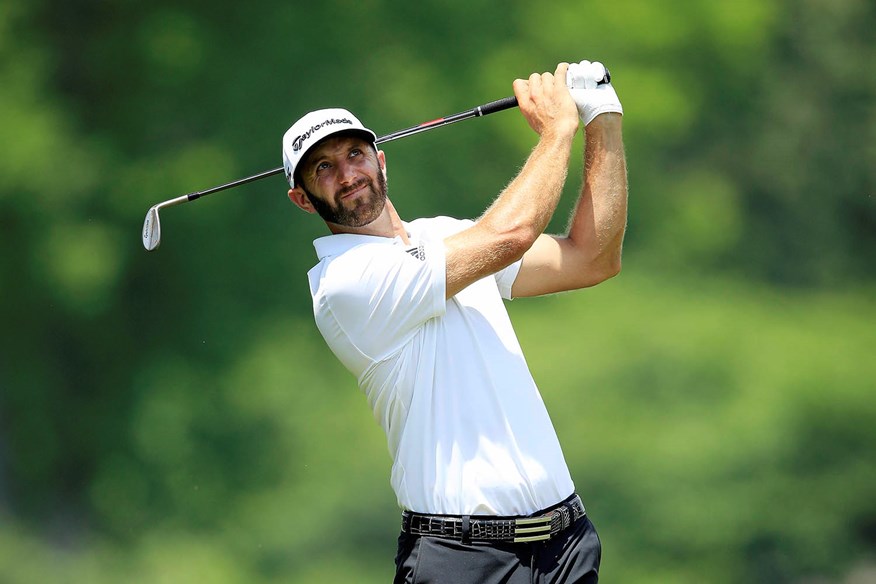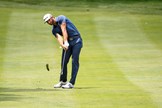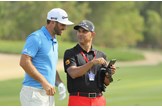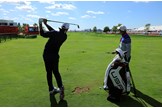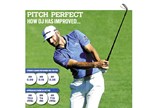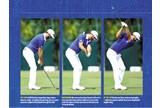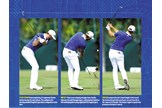How to hit GREAT wedges, with DJ and Claude Harmon III
Published:
Claude Harmon has no difficulty pinpointing the moment he knew Dustin Johnson’s wedge game had come of age.
“It was last August at the Northern Trust, the first event of the PGA Tour’s FedEx Series,” he recalls. “Dustin was fighting his way back after an injury and loss of confidence, while Jordan had just won the Open. The 18th hole is 470 yards, dog-legging left around a lake. DJ had the length to carry it but it would leave him around 100 yards from the green, in a wedge zone that up to 2016 had been something of a weakness for him. But he took the drive on, hit a massive shot and was left with just 95 yards to the pin.
“He just got up there, pitched it to three-feet and sank the putt for a winning birdie. That shot was the culmination of two years of hard work that turned his wedge game around… and took him from being a top-10 player to a top-one player.”
Here, Harmon reveals the process DJ went through to go from being an average wedge player to one of the best on Tour… and explains what you can take from it to tighten up your own play from 50-125 yards.
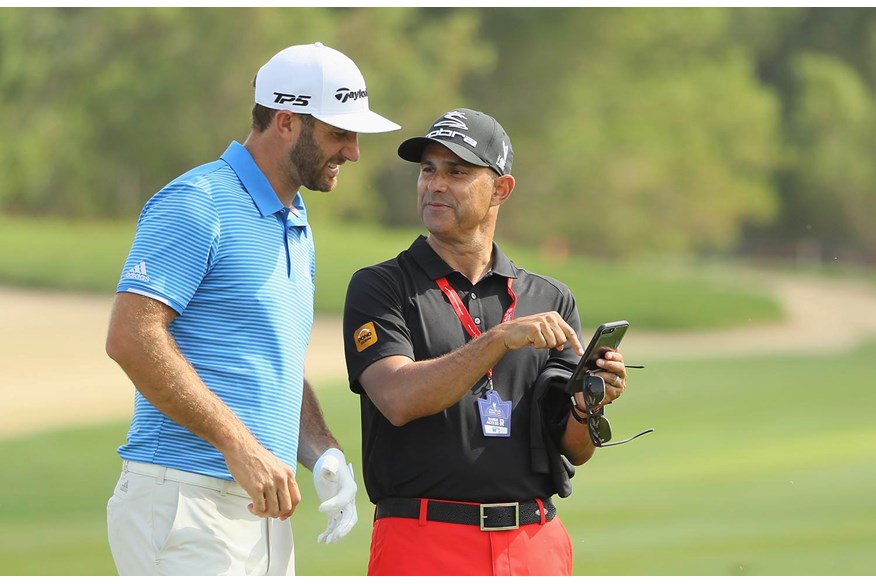
How did you and DJ arrive at the decision to focus on wedges?
Mostly through looking at stats. The first one was simply an appreciation of just how many times in the course of a round or a year DJ is going to have a wedge into a green, given how far he hits it. But we also looked at his Strokes Gained performance on short approach shots; in 2015 from 100-150 yards he was at 0.09, so basically bang average for the PGA Tour. The main focus became to find a way to help him take advantage of his length and the yardages he was leaving himself into a lot of holes.
So how did you set about improving Dustin’s wedge play?
Practising his wedges wasn’t exciting or glamorous or interesting to him. It’s human nature to gravitate towards the parts of the game we are already good at, the ones we enjoy, and for DJ that meant the driver and power shots. Dustin is also not a guy who will hit balls for hours a day; he tends to practise for 90 minutes to two hours, and after this he just kind of checks out. So we needed to find an approach he found engaging and enjoyable, one that would allow him to achieve effective, targeted work. We settled on technology, and specifically the launch monitor TrackMan.
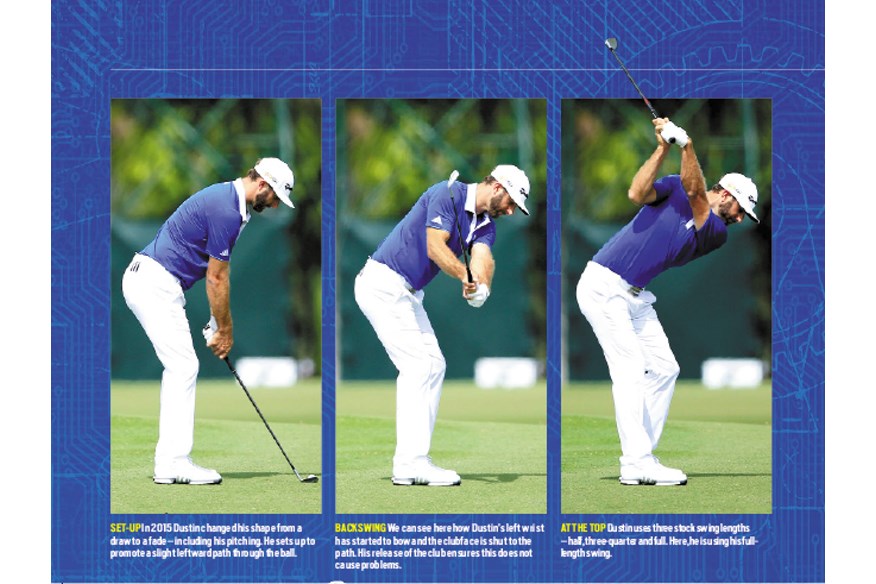
How did you and DJ use TrackMan?
Quite simply, we used it to get consistent at hitting distances. Dustin has three wedges (52º, 60º and 64º) and three wedge swings – half, three-quarter and full-length. We created target distances for each wedge and swing – so nine yardages in all – and he used the ball-tracking tech to see how good he could get at hitting each one. He loved that instant feedback.
Dustin likes to warm up for about an hour-and-a-half – about twice as long as most guys on Tour. Until 2016 that would have been based around long game; these days he’ll spend upwards of an hour of that time just hitting wedges, working on his numbers. When he won the US Open at Oakmont in 2016, he hit wedges for 75 minutes before teeing off.
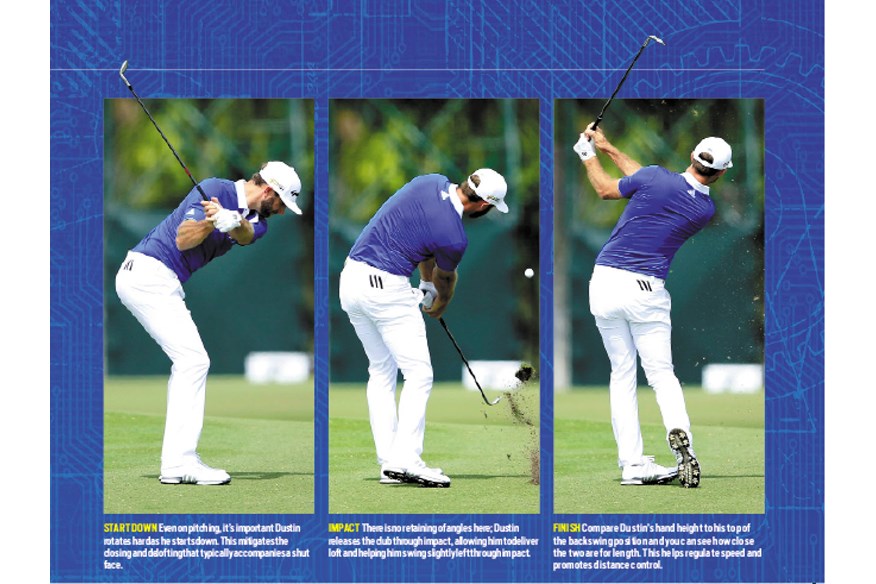
That sounds like something DJ could do by himself; what is your role in this?
Absolutely, and that’s one of its strengths. At any level of golf the last thing we want is for the player to be reliant on their coach; we want them to figure stuff out on their own. The fact it doesn’t have a lot to do with me is the ultimate goal. My role is to give DJ information, areas he can get better, and then come up with ideas and ways to make the process something he would be willing to do and look forward to doing. He is very much a feel player, something he doesn’t get a lot of credit for, so a launch monitor was ideal, something he could just put on the ground and get instantaneous feedback from.
Was there any technical work involved?
Not really, though I strongly believe the changes we made late in 2015, when he took the decision to play with a fade and not a draw, have really helped his wedge game. With the fade the attack gets a little more downward, the path more neutral or even a little left, and Dustin feels like he is a little more on top of the ball through impact, ‘covering it’ with his chest. These are all things you’d like to do when you are hitting a wedge anyway, so from that perspective the shape change helped him make progress with his pitching.
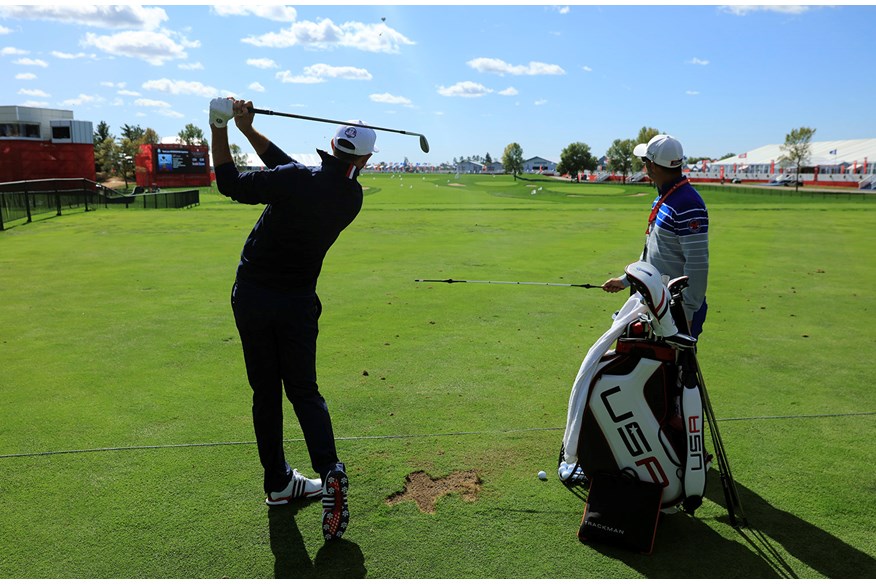
DJ famously has a very bowed left wrist, which puts the clubface into what we would regard as a shut position. How does that not cause issues with pitching and distance control?
Because he continues to rotate. If you rotate out of the way it minimises and nullifies a lot of things that historically having a shut face like that would cause. I actually think his wrist action is a great way to play; he is basically setting up an angle in the wrists which allows him simply to rotate, and that promotes consistency both of attack angle and face loft.
But also, note that DJ releases the club through impact. He is not dragging the handle through, holding on to that lead-arm/clubshaft angle; he hits what we call release fades, and that allows him to deliver the club on the path and with the loft he needs.
Does he have a tendency you have to guard against?
Dustin hits bad shots when he gets slow, when he babies it, and that’s across the board, not just with wedges. With pitching, the number one thing I’m always telling him is to keep his body and chest speed up, hit it harder, perhaps to find shorter positions on the backswing and follow through so he can hit with the speed he wants.
If he’s not hitting the numbers he wants, how do you handle it?
We basically quantify it by looking at the figures. Say he’s looking at hitting a shot of 125 yards and he’s hitting it 130-135; we’ll tend to look to make that motion a little shorter and tighter, keep the speed in and control the distance. But one thing about Dustin is that he doesn’t care if the shot misses to the right; it’s just not an issue for him. But he hates the one that misses left. In 2016 and 2017 he pretty much took the whole of the left side of the course out of play by fading the ball; he looks to fade every shot he plays, even shorter pitch shots. We know that if his path is three degrees left of the target and his face one degree closed to the target, he will hit a nice soft fade, and that’s a great lesson for the club player; find a good relationship between the face and path and you can play from anywhere. If he hits a wedge shot left, you can guarantee it’s because his path isn’t left enough, and his body doesn’t rotate. From here, he can overdraw it.
So, in a nutshell, what can I take from your work with Dustin that will improve my wedge game?
I’d love to tell you there has been some intricate and convoluted process to improving Dustin’s wedge play, but there wasn’t. Ultimately, the road map to turning a weakness into a strength is pretty simple. Just like the work DJ has done in the gym to improve his shape, this is simply a question of standing there and putting the time in. It’s all been about gaining the control that allows him to hit distances at will; he’s used a data-led approach, and there’s affordable technology out there that will allow anyone to follow the same process. It worked for DJ… and it can work for you.
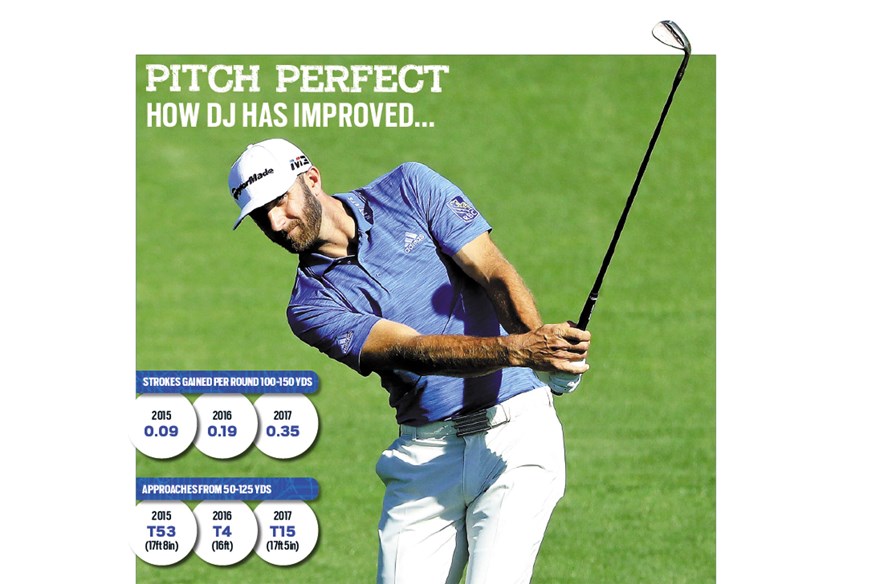
The ordinary golfer doesn’t have £20,000 to splash out on a TrackMan; what can we do?
This is true, but there is technology out there anyone can use that do a similar job, especially the Arccos shot-tracking system used by Cobra in its Connect technology.
The system uses a sensor in the butt of the club to send data to your phone. Its Smart Distance function gives you an average distance for each shot, with the accompanying Smart Range feature showing you the spread of that distance.
The great thing about this system is that unlike pretty much every other technology it works on the course, giving you a true picture of how you perform when it counts.
Track your wedge shots over eight-12 rounds and you will get an average distance for each wedge. Having got those distances, you can go to the range and use a rangefinder to practise hitting them. You can then work on tightening the dispersion figures thrown up by Smart Range.
After all, pitching performance is not about hitting it further, it’s about hitting a specific distance. As Sam Snead once said, “If you want to know how good you are, go to an empty field with your 9-iron, perch up a single ball, and program yourself to hit the ball exactly 125 yards. Hit the shot, then pace off the yardage. If you came within five yards, you’re a player.”
How to improve your own wedge play
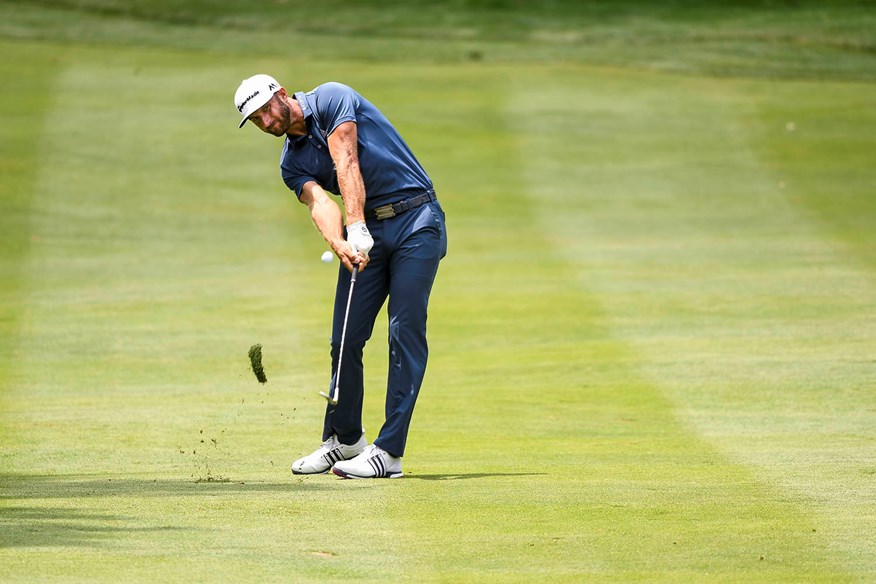
1 Keep the speed up to add bite
For most of us, the Holy Grail of pitching is the shot that bounces once before spinning to a standstill. But to hit that shot you need speed, and most club golfers pitch with an action that has none. The typical problem is a backswing that’s too long. We have some sort of internal GPS which tells us this and slows the swing down through impact… and that compromises quality of strike. With DJ we constantly work on keeping the action short and crisp, allowing him to build that speed into his motion. If your wedge play lacks bite, shorten the backswing and follow this rule.
2 Work on three swing lengths
When I work with an average golfer, I’ll give them 10 balls to hit to the same pin. The bad shots are always when the bottom falls out of club and ball speed, perhaps by as much as 5-10mph. Good players are always within 1-2mph. Nine times out of 10, this is down to swing length either side of the ball. However long your backswing is, your throughswing should mirror it. DJ employs three lengths of swing – half, three-quarter and full – and is very diligent about matching up backswing and follow through lengths. This allows him to deliver the club with consistent acceleration. So just as he did, head to the range and work on creating and hitting those three lengths, marrying up the travel either side of the ball. This will massively help with keeping up the club speed, strike quality and general consistency.
3 Work on giving your shots the same ‘look’
If you tracked 20 pitches to the same target it should look like painting by numbers; but for most club golfers it bears a closer resemblance to abstract art. When I look at Dustin’s pitch data on TrackMan I can see it is very consistent – the launch, height, spin, club speed are very uniform. But DJ can also see this simply by looking at the flight of the ball; his shots have the same look to them in terms of trajectory, shape, height, divot depth and of course distance. So when you practise pitching, stick with one distance and work really hard on keeping the swing speed and shot trajectory the same. If you struggle, go back to evening up the length of backswing and follow through; most of the time, this is the issue.
